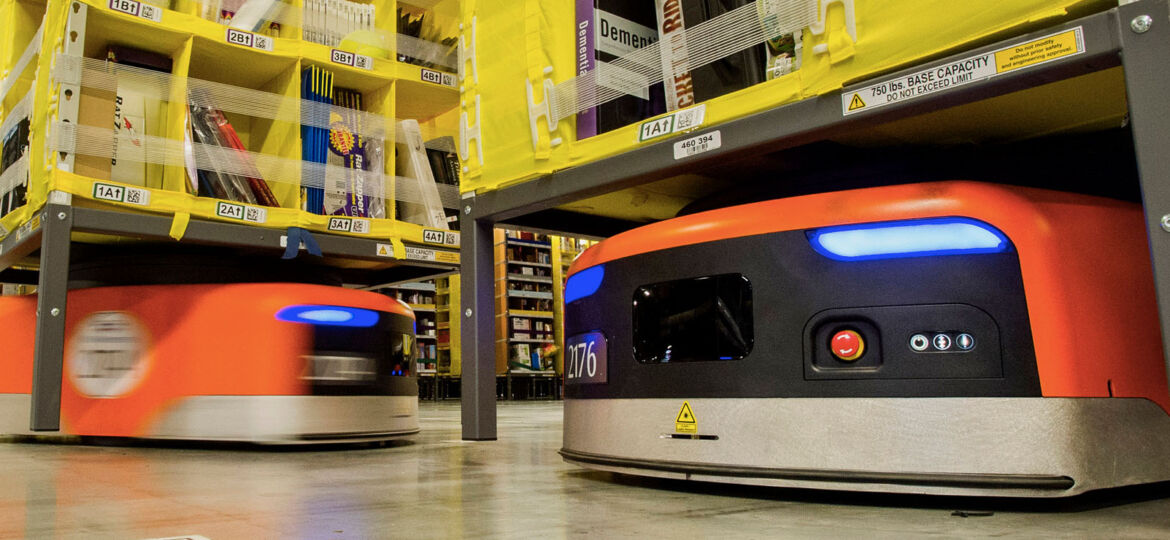
WHY THIS MATTERS IN BRIEF
The combination of “old school” robotics and new AI and Machine Vision technologies is helping robotics companies automate increasingly complex tasks that were once thought to be the exclusive domain of humans.
By the time you’ve picked your Amazon parcel up off of your doorstep and gone to find yourself a pair of scissors to open it up with you’ll have already spent more time with your parcel than all of Amazon’s employees combined.
Many people already know that Amazon is obsessed with automation, but what fewer people know is that one of Amazon’s obsessions is with the details – the minutiae. While many of their competitors look at how they can chop minutes out of a process Amazon does that too, but they also put an incredible amount of focus into chopping out as many seconds as they can too – whether it’s patenting new machines that create the perfectly sized box, or the right length of tape. And when you add all those saved seconds up, and extrapolate them across Amazon’s vast network, all of a sudden you’re saving centuries in time – and money, of course.
On a typical Amazon order we’re now at the stage where Amazon’s employees roughly a minute with every package – taking an item off the shelf, then boxing and shipping it. The rest of the work is done by robots and fully automated systems.
For example, in their one million square foot fulfilment center outside Baltimore, that employs around 3,000 people, Amazon’s addition of robots in 2014, according to the company, helped it store fifty percent more inventory – because robots can pack more items more tightly onto shelves.
In this particular facility, Amazon employees, called pickers, used to have to walk up and down long aisles of goods to find each item on a shelf, but now with its proprietary orange Kiva robots, these pickers can now stand in one place, meaning they can pick more goods per shift. The Kiva robots, which can be seen in the video below, slide themselves under a shelving unit, lift it slightly, and bring it to the picker, and as it sidles up next to the picker a computer screen shows them where the item is.
At this particular facility, which ships items smaller than a breadbox, everything fits onto the shelving units which are partitioned into cubbyholes and some of the slots are stuffed with multiple items, such as shirts and packs of Aspirin.
Once the picker picks and scans the item it’s placed in a yellow bin, and the Kiva robot automatically scoots off to its next job, and another shelving unit that’s been waiting its turn pulls up to the picking station and the process repeats.
Meanwhile, the yellow bins, which are tracked as they move through the warehouse via their barcodes, travel along some of the six miles of conveyor belts in each warehouse to another station where another employee takes around fifteen seconds to assemble the right box, which is automatically spat out by a machine, add bubble wrap, tape it up, using the perfect length of tape, again provided by a machine, slap on a barcode and stick it back on the conveyor belt. During this entire process the only part that needs any form of human thought is how much bubble wrap to use.
After the package is back on the conveyor belt, it goes through another machine where an address label is automatically stamped onto the box, and then they’re whizzed through what looks like a mini toll booth on the conveyor belt, get scanned by lasers and scoot along another conveyor belt to the waiting trucks where another employee, the last in the line, puts it into the waiting truck, and the truck driver takes it from there.
Today it’s good that there is still a role for humans, Amazon employs around 79,000 pickers in the US alone. However, with breakthroughs in Artificial Intelligence (AI), Machine Vision and robotics that are helping companies create robot pickers that are faster, and more accurate than humans, and with the advent of self-driving semi-trucks, one of which from Otto, Uber’s self-driving truck company, that completed the world’s first autonomous semi-truck delivery last year, and new autonomous Amazon delivery drones, it’s not hard to see how soon these jobs too will disappear, or “be optimised.”
Just to top it off there’s now an increasing amount of chatter that suggests that Amazon could be the world’s first fully robotic, fully automated fulfilment company, and all that’s needed for that to happen is for one man to sign it off and make it happen… over to you Jeff.

















[…] Source link […]
[…] if it could be tied into something like a fully autonomous fulfilment network, like the one Amazon could build, then it could be an interesting […]